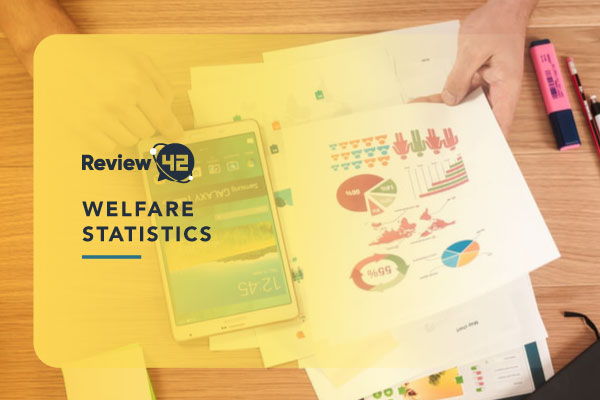15+ Stats on Electricity Prices by State
 Fact-checked
Fact-checked
Last Updated: April 11, 2022
When choosing where to live, the electricity cost is one of the most important factors. It’s also a hot topic for debate, as prices seem to be constantly on the rise. We all know that electricity prices vary by state, but have you ever wondered just how much they can differ?
In this blog post, we’ll take a look at some fascinating facts and stats about electricity prices by state. So, without further ado, let’s get started!
Electricity Prices by State: Fascinating Facts and Stats
- Hawaii is the state with the highest price rate for electricity, with a median cost of 34.3 cents per kWh.
- With 10.04 cents per kWh, Washington state has the lowest electricity price rate.
- Compared to all cities in the US, New York City has the highest electricity price rate – $0.17/kWh.
- Knoxville, Tennessee, is the city with the lowest electricity rate in the US per kWh, $0.085 per kWh on average.
- The average electricity price in Texas is around 12.56 cents per kilowatt-hour (kWh).
- For someone who lives alone, the average monthly electric bill is approximately $60.
- An average monthly electric cost in Florida for a 1-bedroom apartment is $131.
- The average electricity rate in deregulated states in the US is 17.21 cents per kWh.
Electricity Prices and Costs by State
Now let’s see what numbers are saying:
1. Hawaii, Massachusetts, and California Are the States With the Highest Electricity Rate in the US
(Statista) (EIA)
The average price of electricity in Hawaii is 34.3 cents per kWh, in Massachusetts, this price is 23.48 cents, in California, it’s 23.44 cents per kWh. For example, the average cost of electricity in California per month is $116.94, in Massachusetts it’s $132.18, and Hawaii has an average electricity cost of $162.66 monthly.
Speaking of high prices, California and Hawaii also have the highest average gas prices in the country.
2. The US State With the Lowest Electricity Price Rate Is Washington, With 10.07 Cents per Kwh
(Save On Energy)
This is almost four times lower than the price in Hawaii, which has the highest electricity price rate in the country when comparing electricity costs by state.
After Washington, the US states with the lowest electricity rates are Utah with a rate of 10.16, Idaho with 10.33 cents for kWh, and Wyoming with an electricity rate of 10.63 cents per kWh.
3. In the US, the City With the Most Expensive Electricity Rates in New York, With a Rate of $0.17 per Kilowatt-Hour
(Peak Substation)
When electricity rates by the city are compared, New York is the priciest city. The rate is higher than the national average of $0.12 per kWh mostly because of the high cost of living in New York City, its infrastructure, and high population density, but also the high tax fees that New Yorkers are exposed to.
4. For Florida’s Residential Consumers, the Average Monthly Electricity Cost in 2022 Is $139.32
(Save On Energy)
The electricity rate in the Sunshine State in 2022 is 12.2 cents per kWh, and the average monthly consumption is 1,142 kWp, placing Florida among the states with the highest monthly electricity rates in the US.
5. Knoxville, Tennessee Is the City With the Cheapest Electricity Rate in the U.S. Per Kwh, With the Price of $0.085 per Kwh on Average
(Peak Substation)
Knoxville, Tennessee has an electricity rate lower than the national average. The reason for that is that Tennessee is a major producer of coal, which is used to generate electricity.
Knoxville also benefits from lower taxes and fees than other parts of the state.
6. The Average Monthly Expense for Electric Bills for a 1-Bedroom Apartment in Florida Is $131
(Inspire Clean Energy)
Florida consumers on average use 1081 kWh of electricity each month, placing the state as the 13th in terms of usage. US states within the same price range per month are Texas and Maryland—for a one-bedroom apartment, Texas electricity rates amount to around $132 a month, and for Maryland, the monthly bill for electricity in a one-bedroom apartment is $125 on average.
7. The Average Electricity Price in Texas Is Around 12.56 Cents per Kilowatt-Hour (Kwh)
(Compare Power) (Click2Houston)
According to the Public Utility Commission of Texas, the average monthly electric bill in the state is $128.50, or $1,542 per year. At $200, the cities of Laredo and Midland have the highest average monthly electricity bills, and Brownsville and Corpus Christi are the cities with the lowest average monthly bill – $140.
8. The “On-Peak” Rates During the Summer Can Be 1.5 Times Higher Than in the Other Seasons
(Consumers Energy)
Energy-use spikes are common during the summers between 8 a.m. and midnight, depending on which part of the country you live in. As an illustration, using HVAC systems during the “on-peak” periods can add $2 more on the monthly bill.
9. The Average Electric Bill in Arizona Is $140.70 per Month
(High Desert Energy)
Around the same range is Louisiana, with a monthly electric bill of $138.84, Florida, with an average bill of $139.32 per month, South Carolina with a monthly electricity cost of $141.29, and Texas and Massachusetts with $142.07 and $146.29 per month.
Electricity Rates and Costs
Let’s continue:
10. The Average Electricity Rate in Deregulated States in the US Is 17.21 Cents per Kwh
(Quick Electricity) (EIA) (Electricity Rates)
For instance, the average electric bill in Michigan, which is a deregulated energy state, is $109.86 a month, or 13.75 cents/kWh. In deregulated states, monthly kWh expenses are higher, reinforcing the misconception that electricity is more expensive in unregulated markets, but the truth is that in most deregulated states electricity costs were higher, to begin with.
11. In 2020 in the US, the National Average Industrial Electricity Rate Was $6.66 per Kwh
(Statista) (EIA) (Cost Analysts)
At 30.69 cents per kWh, Hawaii has the most expensive industrial electricity rate, and the lowest rate is 5.16 cents per kWh, noticed in Alabama. For instance, in general, the national average electricity cost per month for a production factory is $5,370.
12. In 2020 in the US, the Average Monthly Bill for a Business Was $602
(Choose Energy) (EIA)
The cost of electricity for a business differs from state to state, and also depends on which industry the business is in and the amount of activity it does. On average, business owners spent $7,750 per month on electricity in 2020.
13. In the United States, the Average Monthly Bill for Residential Electricity Is $114.44
(Move)
According to the US Energy Information Administration (EIA), this number has been steadily rising over the past few years due to the increasing expense of electricity and increased taxes in different states.
14. In 2022, the Average Nominal Price for Electricity Is Estimated to Increase by 3.9% To 14.26 Cents/Kwh
(EIA)
In addition, the average cost of electricity per kWh by the state is estimated to increase by about 50% between now and 2050. This growth is due to a number of factors, including population growth and economic development. For comparison, in the 1920s, the average cost of power per kilowatt-hour across North America was between nine and seven cents per kWh.
15. For Someone Who Lives Alone, the Average Electricity Cost per Month Is Approximately $60.
(Inspire Clean Energy)
With two residents, the monthly cost is roughly $66, whereas for a family of four, the average monthly electric bill is approximately $160. However, this amount will vary depending on the state you live in, as well as the season. Factors such as the size of your home and how often you use certain appliances will also affect your monthly bill.
16. In 2021, 20% Of Americans Couldn’t Pay Their Energy Bill on Time
(cnbc)
The reason for this is that in some states the average cost of electricity is quite high compared to the growing number of people who live in poverty. Also, the effect that the Coronavirus pandemic had on the economy didn’t help a lot of people with their monthly bills.
17. When Running on High, an Air Conditioning System Spends an Average of $0.20 per Hour to Operate
(Appliance Analysts)
For example, if you run the heater for 8 hours per day, the average kWh usage will be 1500W, and approximately $48 will be added to your monthly electric bill. In other words, heaters account for around 40% of the monthly bill. However, if your home has central heating (or cooling), this number will be lower.
18. Having a Prepaid Electricity Meter Can Save You 12–15% Of Electricity per Day
(Save On Energy) (Achiever Prop)
Prepaid meters are becoming increasingly popular among consumers, mainly because they save a great amount of money. For example, if you live in the Sunshine State, the average electric rate is 12.2cents per kWh, which means that the average electric bill in Florida is $139.32. However, with prepaid electricity plans, you can save on your electricity bill around $20–$30 each month.
Conclusion
After analyzing the data, we can see that there are many factors affecting how much you spend on your electricity bill. It differs from state to state, season to season, and industry to industry, while also depending on how big your family is. In addition, due to different fuel sources used to generate electricity in each state, the cost of electricity per kwh by state varies.
FAQ
The state with the highest electric rates is Hawaii. At 34.3 cents per kWh, the average electricity cost in Hawaii is more than double the national average of 12.54 cents. As a result, residents of Hawaii spend an average of $183 per month on electricity bills, which is significantly higher than most other states.
Due to its large hydroelectric power plants and its abundance of cheap natural gas, the cheapest place for electricity is Washington state, where the average price per kWh is just over 10.04 cents, amounting to a monthly cost of $85.
Electricity prices by state vary by a great deal. In general, industrial and commercial electricity customers pay more than residential customers because they have bigger energy needs and demand a higher quality of service. However, there are some states where businesses actually catch a break on their rates. Overall, it’s important to be aware of the various prices by state so you can plan the energy usage for your home or business accordingly.



![How Many Marriages End in Divorce [Fascinating Facts and Stats]](https://review42.com/wp-content/uploads/2022/07/How-many-marriages-end-in-divorce.png)
![How Much Do Flight Attendants Make? [Latest Data for 2024]](https://review42.com/wp-content/uploads/2022/06/feature-image-56-how-much-do-flight-attendants-make.jpg)
![How Many Websites Are There? [2024’s Data]](https://review42.com/wp-content/uploads/2022/05/feature-image-55-how-many-websites-are-there.jpg)
![Average Gas Prices by State in the US [2024 Data]](https://review42.com/wp-content/uploads/2022/03/feature-image-51-average-gas-price-by-state.jpg)





